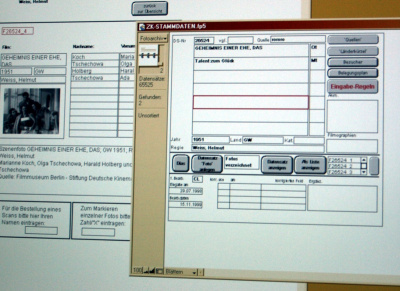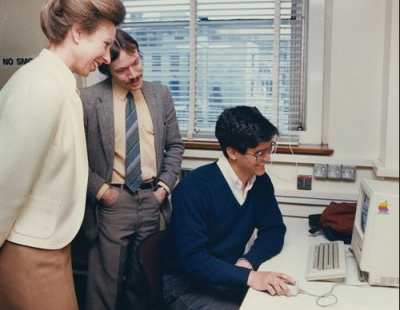Difference between revisions of "How fragmentation happens"
From filmstandards.org
(→So many databases ...) |
(→So many databases ...) |
||
| Line 5: | Line 5: | ||
... and still more to come? | ... and still more to come? | ||
| − | Over the past two or three decades, databases have sprouted in every corner. With little or no guidance from standards, we now often have '''dozens''' of film-related databases '''in a single institution'''. | + | Over the past two or three decades, '''databases''' have sprouted in every corner. With little or no guidance from standards, we now often have '''dozens''' of film-related databases '''in a single institution'''. |
{| style="float: right; border: 1px solid #BBB; margin: .46em 0 0 .2em;" | {| style="float: right; border: 1px solid #BBB; margin: .46em 0 0 .2em;" | ||
| Line 36: | Line 36: | ||
Those were the days: | Those were the days: | ||
| − | Personal desktop computers encouraged the creation of '''personal databases'''. Many of | + | Personal desktop computers encouraged the creation of '''personal databases'''. Many of them '''still exist''' (and continue to grow). |
| − | Some of these databases are real gems of scholarship, reflecting thousands of hours of diligent research. | + | Some of these databases are real gems of scholarship, reflecting thousands of hours of diligent research. However, integrating them with modern knowledge bases can require further hundreds of hours of manual work. |
| + | |} | ||
| + | |||
| + | {| style="float: right; border: 1px solid #BBB; margin: .46em 0 0 .2em;" | ||
| + | |- | ||
| + | | valign="top" width="405px" | | ||
| + | <mediaplayer image='http://filmstandards.org/media/barry-smith-talking.png'>http://filmstandards.org/media/barry_smith2009.flv</mediaplayer> | ||
| + | <br /> | ||
| + | <span style="font-size:8pt"> | ||
| + | From: Introduction to Biomedical Ontologies. A training course in eight lectures by Barry Smith. University of Buffalo, 2009 (License: "Free for use in any way")</span> | ||
| + | |||
| + | | valign="top" width="405px" | | ||
| + | Barry Smith is a philosopher working on the foundations for representing human knowledge in information systems. | ||
| + | |||
| + | In his introductory lecture to students of biomedical informatics, he addresses the issue of '''integrating''' hundreds, if not thousands, of '''databases created''' by biomedical researchers '''in the past decades'''. | ||
| + | |} | ||
| + | |||
| + | {| height="20px" width="100%" | ||
| + | |- style="text-align:center; " | ||
| + | |<span style="color:#808080"> • Previous: [[How EN 15744 and EN 15907 came into being]] • Up: [[TC 372 Workshop Compendium|Contents]] • Next: [[...]] • </span> | ||
| + | |- | ||
|} | |} | ||
Revision as of 19:10, 1 April 2011
From the TC 372 Workshop Compendium
So many databases ...
... and still more to come?
Over the past two or three decades, databases have sprouted in every corner. With little or no guidance from standards, we now often have dozens of film-related databases in a single institution.
|
<mediaplayer image='http://filmstandards.org/media/barry-smith-talking.png'>http://filmstandards.org/media/barry_smith2009.flv</mediaplayer>
|
Barry Smith is a philosopher working on the foundations for representing human knowledge in information systems. In his introductory lecture to students of biomedical informatics, he addresses the issue of integrating hundreds, if not thousands, of databases created by biomedical researchers in the past decades. |
| • Previous: How EN 15744 and EN 15907 came into being • Up: Contents • Next: ... • |

